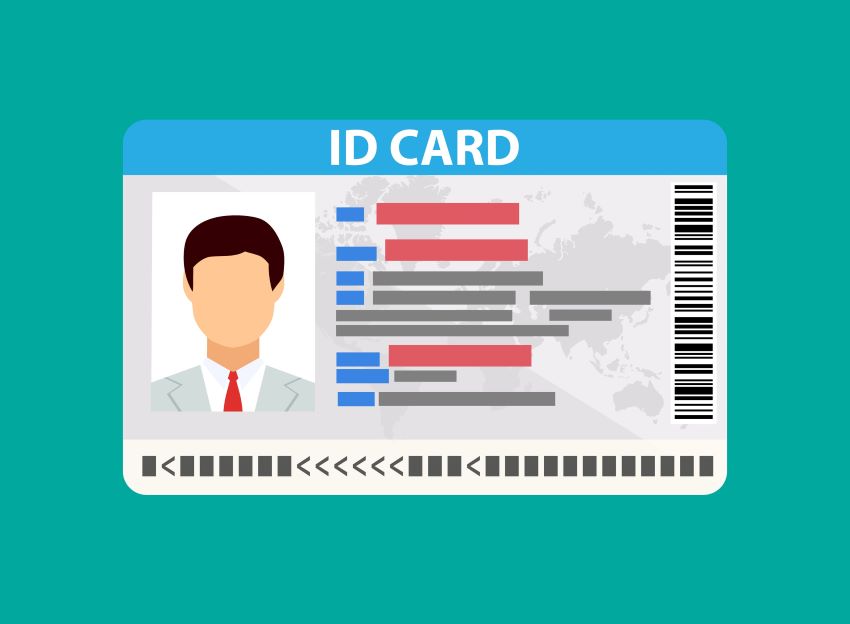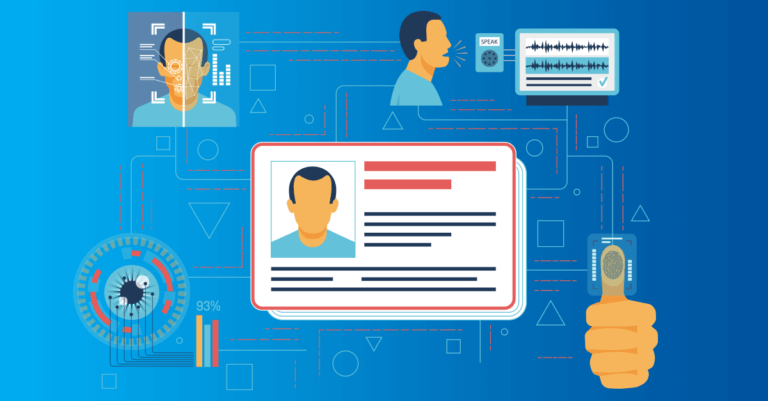A fake ID also called a false identification or simply a “fake,” is a forged or altered identification card that is used to misrepresent the user’s identity. It is presented as a genuine form of identification typically to purchase age-restricted goods or gain entry to places where only those of a certain age or legal status are allowed. These kinds of IDs are illegal and could get you in a lot of trouble if you are caught. With technology getting better all the time, it’s important to know how to tell the difference between real and fake IDs. That’s all. How to find a fake ID is now known to you.
Why People Look for Fake IDs
People search for false IDs for many different purposes. People could, first of all, want to have access to goods and services like marijuana and alcohol, which are exclusively accessible to those of a certain age. This is especially true for teens who want to buy smokes or get into bars and clubs to hang out with friends. People may need to use a fake ID in order to get medical or health services that require identification in some situations.
Finding work is another reason why people might look for fake IDs. People have to be a certain age to work in some fields, like the hotel business. With the right skills, a fake ID could help you get a job. Remember that getting a fake ID to trick an employer is against the law and can lead to serious problems.
Also, driving without a license is against the law and can lead to big fines and legal problems. Teens who are too young to obtain a driver’s license may opt to use a fake ID to gain access to a vehicle. But this is not only against the law, it’s also very dangerous.
Types of Fake IDs
It’s important to know that not all fake IDs are the same if you need to use one. There are different kinds of fake IDs, each with its own level of quality and safety features. We will learn more about the different kinds of fake IDs and what makes them different in this piece. Continue reading to find out more.
Holographic Images
When looking for a fake ID, the reflective picture on ID cards is one of the most important things to keep an eye out for. Holographic pictures are useful for security because they are hard to copy, which is why they are an important part of government ID cards.
The ID cards for each state have a different hologram picture on them. When looking to see if an ID is real, it’s important to know the exact picture of the state you are in. If you hold the card up to the light, you should be able to see the picture and find any mistakes.
For instance, the State of California has a hologram image of the state’s name next to the image of a bear. It’s easy to identify if the image is genuine since it will appear as a three-dimensional image when held to the light. On the other hand, Colorado has a hologram of a mountain range that also appears as a 3D image when held up to direct light.
These unique images can be challenging to replicate, but not impossible. Who creates the fake IDs should match the hologram image to the state, but with precision. Failure to do so leads to poor-quality counterfeit IDs.
Lighter Image
The Lighter Image is another element that can aid in identifying fake IDs. This is a secondary image that is typically printed on most government-issued IDs. Unlike the holographic image, the Lighter Image can only be viewed under ultraviolet lighting.
The significance of the Lighter Image is that it is generally lighter than the primary photograph and is positioned in such a way that it is centered around the driver’s photograph. There should be transparency around the face to ensure that the Lighter Image is visible.
The Lighter Image is considered a more secure feature than the state’s seal picture, which can be more easily copied by counterfeiters. However, it is important to note that each state has its unique Lighter Image features. These may differ in size, color, shape, and position. Thus, having a checking guide or reference guide specific to your state can help identify any discrepancies in the Lighter Image.
Counterfeiters may attempt to copy the Lighter Image, but it can be challenging to do so with precision. This is because the Lighter Image requires special printing technology and professional laminate. Failure to achieve perfection in replicating the Lighter Image can result in poor-quality counterfeit IDs that can be easily detected.
Laser Embossing
Laser embossing is a crucial security feature that can help identify a fake ID. This process creates raised lettering or designs on the front of the ID, making it difficult to replicate without additional tools.
Laser embossing is a security feature that creates raised designs that can be touched and inspected to confirm it adheres to applicable standards. This method is widely employed in government-issued cards, driver’s licenses, and other age-restricted items.
Several states in the US use laser embossing for various elements of their IDs. For example, in California, laser embossing is used for the cardholder’s name and birthdate, while in New York, it is used for the state’s symbol.
It is essential to check whether the ID you are examining has a laser-embossed design. If the ID features a laser-embossed raised design, it is a strong indicator that it is a genuine ID. Most often, fake IDs will not have this hallmark security feature, making it a reliable method for identifying a fake ID.
Magnetic Strip
Magnetic strips are a common security feature found on official forms of identification cards, such as driver’s licenses, passports, and government-issued IDs. The magnetic strip is a small area on the back of the ID that contains encoded data and can be read using a specialized reader.
The information contained within the magnetic strip typically includes the individual’s name, address, date of birth and other pieces of identifying information. This data can be used to quickly verify the individual’s identity, making it an essential feature for various organizations and government agencies.
To verify the authenticity of an identification card’s magnetic strip, a specialized reader is required. The reader decodes the information stored within the magnetic strip and compares it to the information presented on the card. If the encoded data matches the details on the card, the ID can be considered authentic.
It is important to note that not all forms of identification contain magnetic strips. For instance, some state-issued IDs may not have this feature. Therefore, it’s crucial to check the specific requirements for the type of ID being checked to determine whether a magnetic strip check is necessary.
UV Light
When checking identification cards for authenticity, one of the essential tools for spotting fake IDs is UV light. Under UV light, various security features that are not visible to the naked eye become evident. Knowing the specific UV imagery for your state is crucial because each state has different security features.
For example, some IDs have a second, lighter image that only appears under UV light, while others like Washington have the UV image appearing in multiple places as the state seal. Being familiar with the state-specific security features will help you spot fake IDs more accurately.
One of the vital aspects of examining identification cards under UV light is knowing what to look for. Several features that are not visible under normal lighting conditions become apparent when using UV light. These features include holographic images, laser perforations, and magnetic strips.
Holographic images are three-dimensional graphics that appear to be floating above the surface of the card. They are commonly used as a security feature for identification cards, and under UV light, they take on a more prominent appearance. Laser perforations are small, precise holes that are cut using a laser to create intricate patterns, shapes, or details on the card. These are visible under UV light and help in verifying the authenticity of the ID card.
Magnetic strips are another essential security feature that is only visible under UV light. The encoded data on the strip can be read and compared to the information presented on the card to verify authenticity. Knowing how to spot these features can help you detect quality counterfeit IDs from real, government-issued ones.
Laser Engravings
Laser engraving is a crucial security feature that contributes to the authenticity of identification cards. This process creates a raised texture on certain text elements, making it easier to verify the identification card’s legitimacy. Laser engraving is a technique that involves using a high-powered laser beam to etch the card’s surface, leaving a clear, permanent, and easy-to-spot text or design.
The laser engraving process begins with an initial design or text that is inputted into the engraving machine’s computer software. Next, the laser beam is directed onto the card’s surface to etch the design or text accurately. Laser engraving is a highly sophisticated technology that ensures precision and consistency in the production of identification cards.
Several states in the United States have embraced laser engraving as a security feature on their identification cards. North Carolina’s driver’s license and ID cards have laser-engraved text to improve their authenticity. California’s new REAL ID driver’s license also utilizes laser engraving, which makes it difficult for counterfeiters to replicate the card’s features.
The raised texture created through laser engraving is an additional security measure that complements other security features such as holographic images, magnetic stripes, and laser perforations. Checking for laser engraving on an identification card is a necessary step in verifying its authenticity.
Laser Perforations
Laser perforation is a highly sophisticated security measure that is widely used to authenticate official forms of identification. This technology involves creating small, needle-tip thin holes on the surface of an identification card that forms an image when viewed collectively.
Each state in the United States uses laser-perforated images uniquely as a security feature. These images are often invisible to the naked eye and can only be seen when held up to direct sunlight. State governments create laser-perforated images to represent their state symbols, such as birds, flags, or specific geographic shapes.
For instance, Kansas driver’s licenses feature a laser-perforated image of the state’s outline in the form of a turtle. This image appears on both the front and back of the license. Similarly, New Hampshire’s license includes a perforated image of the Old Man of the Mountain.
Integrating laser perforations as a security feature is a highly effective way to prevent fraudulent activities such as identity theft. The technology is challenging to replicate and provides a unique identification mark on every identification document.
While checking for laser perforations may seem like a small step in verifying an ID’s authenticity, it is a crucial one. This security measure is only visible under direct sunlight, making it impossible to counterfeit. Therefore, it is essential when examining an identification card to hold it up to direct sunlight to verify its authenticity by checking for the presence of laser-perforated images.
Identifying a Fake ID
Being able to spot a fake ID is a crucial skill that everyone should learn. It could be the difference between serving an underage patron at a bar or gaining access to a restricted area. In this article, we will discuss various security features and techniques that can be used to identify a fake ID. By the end of this article, you will be equipped with the knowledge to spot a fake ID easily.
Physical Description
Identification cards, whether government-issued IDs or fake identification cards have specific physical features that differentiate them from one another. As a content writer tasked with writing about how to find a fake ID, it’s essential to explore the physical description of an ID card in detail.
Firstly, the weight of the ID card is a crucial aspect to consider. Authentic identification cards are made using sturdy materials such as PVC or Teslin, which give them a solid, rigid, and heavier feel. On the contrary, a fake ID card may feel lighter because it’s made from different materials that are not sturdy or durable.
Texture and size are also significant factors to consider. Genuine identification cards have a smooth surface texture that’s hard to replicate, whereas counterfeit ID cards may have a different texture that feels rough. Additionally, the size of the ID card is usually consistent across different states or countries. Therefore, it’s easy to tell if a card is fake by comparing it to other legitimate IDs.
Color is another crucial aspect to consider when examining an ID card. Authentic identification cards have vibrant colors and distinct graphics, ensuring they look sophisticated and professional. On the other hand, fake IDs’ colors may appear dull or off, with slightly blurred graphics.
Apart from the primary features, there are also specific details to focus on to determine an ID card’s authenticity. Laser engravings, magnetic strips, and UV security features are increasingly becoming standard in creating genuine identification cards. A real ID card usually has a holographic image, laser perforations, and professional laminate. On the other hand, a fake ID card may lack these features or have low quality.

Security Features
Security features are essential components in identification documents that aid in preventing counterfeiting and fraudulent activities. To identify fake IDs, it’s crucial to keep a lookout for security features as they are key indicators of an identification document’s authenticity.
Identification documents such as driver’s licenses and passports incorporate standard security features that are challenging to replicate. One of these features is the holographic image, which is a three-dimensional image that appears to change when tilted or moved. A real identification document usually has a holographic image that’s clear and precise, with no blurs or discrepancies. On the other hand, a fake ID may have a holographic image with low quality and inconsistencies in color or shape.
Another common security feature present in identification documents is the magnetic strip. Magnetic strips contain encrypted data such as the holder’s name, date of birth, and identification number. To authenticate an identification document, the magnetic strip data is compared to the physical description of the holder. By swiping an identification document on a magnetic strip reader, authorities can retrieve the holder’s details and check for any discrepancies. A fake ID may lack a magnetic strip or contain incorrect data, making it easy to identify.
Laser engravings are also standard security features in identification documents. Laser engravings involve the use of lasers to create intricate designs, patterns, or texts that are impossible to replicate using standard printing techniques. A genuine identification document usually has laser engravings that are precise, clear, and easily visible. Conversely, fake IDs may have laser engravings that are blurred, inconsistent, or missing.
Common Forms of Identification
In the UKseveral forms of identification arere commonly used and accepted by various institutions for different purposes. These identification documents are essential in many aspects, as they provide proof of identity, age verification, and eligibility to access certain services or facilities.
The most widely accepted forms of identification in the UK are the passport, the driver’s license, the utility bill, and the bank statement. Each of these documents has its unique features that enable them to be easily identified and verified as authentic.
Passports are considered the most secure form of identification in the UK, as they contain several security features that make them difficult to counterfeit. One of the most evident security features is the machine-readable zone (MRZ), which is a sequence of characters at the bottom of the passport’s main page. The MRZ contains essential information about the passport holder, such as name, date of birth, nationality, and passport number. Additionally, a passport also contains a physical description of the holder, including their hair color, eye color, and height. To ensure that a passport is authentic, make sure to examine the MRZ and the physical description closely.
Driver’s licenses are another common form of identification in the UK. They usually contain a photograph of the holder, their name, date of birth, and address. A driver’s license also has a unique license number, which can be used to verify its authenticity. To prevent fraud, driver’s licenses also incorporate several security features, such as a holographic image, micro print, and laser perforations. By checking these security features, it’s easy to spot the difference between an authentic and a fake driver’s license.
Utility bills and bank statements are also accepted as proof of identity in the UK. These documents contain the holder’s name and address and can be used to confirm their residency and financial status. To ensure that these documents are authentic, they should have a professional laminate, clear typeface, and contain no ragged or square edges.
Additional features that can be found on identification documents include a middle initial, which can help to distinguish between people with similar names. Eye contact with the holder of an ID can also be useful in confirming their identity. Furthermore, individuals should take note of any anxiety or signs of discomfort that the holder may have, as these may indicate that the ID is not authentic.
Government-Issued IDs
Government-issued IDs serve as an essential form of identification for individuals, proving their identity, status, age, and nationality for a wide range of purposes. These IDs are required in various situations such as opening bank accounts, availing employment, renting accommodation, and even traveling overseas.
The most commonly used government-issued IDs in the UK are driver’s licenses, passports, and national identity cards. Driver’s licenses are primarily used as proof of driving eligibility, while passports serve as proof of citizenship and are required for international travel. National identity cards serve as proof of identity and age for individuals who do not possess a passport or driving license.
One of the primary features of these IDs is their security measures, including holographic images, lighter images, laser embossing, magnetic strips, and laser perforations. These provide a layer of protection that makes it harder for fraudulent IDs to be created while allowing authorities to verify their authenticity quickly.
Holographic images and lighter images are used to enhance the aesthetic appeal of the IDs and make it easier for individuals to recognize their authenticity. Laser embossing is used to enhance the texture and tactile experience of the IDs. Magnetic strips and laser perforations are used to store and protect data that may be needed for identification.
Furthermore, these security measures have evolved and improved over time, making it increasingly difficult for individuals to create fake IDs. The use of UV light sources and checking guides has become standard practice in verifying these IDs, and special equipment is now required to produce quality counterfeit or fake passports or driver’s licenses.
Conclusion
In conclusion, identifying fake IDs is crucial for legal compliance and public safety. Fake IDs can be used for a variety of illegal activities, including underage drinking, identity theft, and human trafficking. However, with some knowledge and the right tools, spotting a fake ID can be relatively easy. One should examine the security features, including microprint, holographic images, lighter images, laser engravings, and UV light. Common forms of identification and government-issued IDs, such as driver’s licenses, passports, and state IDs, are often faked.



